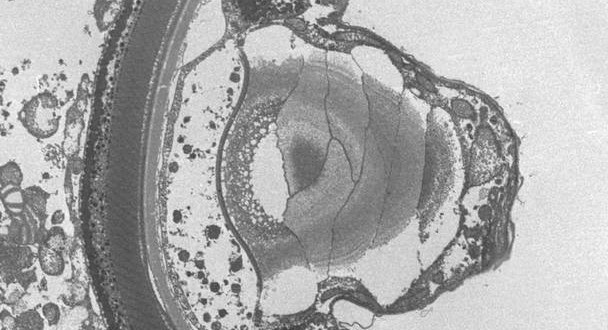As a new study reveals, warnowiids, a type of single-celled marine plankton, possess a tiny, human-like eye. Researchers believe the Warnowiid dinoflagellates use the eyes to spot prey.
Lead scientist Greg Gravelis, from the University of British Columbia in Canada, said: ” It’s an amazingly complex structure for a single-celled organism to have evolved.
“It contains a collection of sub-cellular organelles that look very much like the lens, cornea, iris and retina of multicellular eyes found in humans and other larger animals.”
Experts are still not sure exactly how the plankton organisms, called warnowiids, use the eye. They are known to employ harpoon-like structures to hunt plankton prey, which is often transparent.
One theory is that the eye helps warnowiids to detect shifts of light passing through the bodies of their prey, showing them in which direction to hunt.
Dr Brian Leander, also from the University of British Columbia, said: “The internal organisation of the retinal component of the ocelloid is reminiscent of the polarising filters on the lenses of cameras and sunglasses. It has hundreds of closely packed membranes lined up in parallel.”
The researchers collected samples of warnowiids off the coasts of British Columbia and Japan and used a 3D microscope technique to analyse the eye-like structure.
The study, reported in the journal Nature, sheds light on how very different forms of life can develop similar traits in response to their environments, a process called convergent evolution.
“When we see such similar structural complexity at fundamentally different levels of organisation in lineages that are very distantly related, then you get a much deeper understanding of convergence,” said Dr Leander.
Agencies/Canadajournal
 Canada Journal – News of the World Articles and videos to bring you the biggest Canadian news stories from across the country every day
Canada Journal – News of the World Articles and videos to bring you the biggest Canadian news stories from across the country every day



